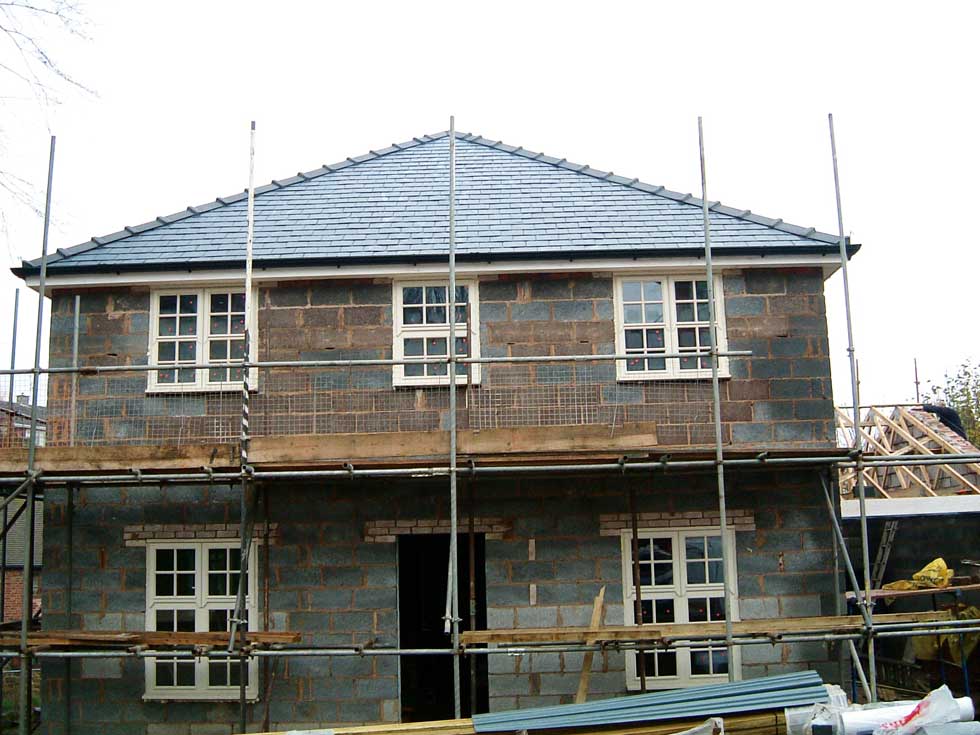Shell Only Contracts: Are They a Good Idea?
Using a builder to get you to weathertight stage and taking the rest on yourself has its benefits — but needs careful and clear thinking

In the world of residential construction, it is becoming more common for those wanting to self build or extend to engage a contractor to construct the shell of the house to a water and weathertight stage under one contract.
This often-used approach involves handing over the management and risk for a significant portion of the build, and then retain control of the elements with which you feel comfortable and able to manage.
Usually the portion which is passed to a contractor is the drainage, foundations and main structure, universally referred to as the ‘shell’. This stems from commercial schemes which are constructed to ‘shell and core’ standard, with the incoming tenant or owner then carrying out the final fit-out of items separately.
The follow-on works are then procured directly as trades packages, or on labour and material basis, through to completion.
(MORE: Typical Self Build Schedule)
Benefits of Shell-Only Contracts
This hybrid procurement gives a level of control and hands-on involvement which is desirable in a project in which you’ll end up living, while giving the peace of mind of the experienced main contractor having responsibility for setting out, preparing and building the main structural and waterproof elements of the build. It also gives the security of recourse if there are problems with the main structure and/or on site.
In practical terms, this fits particularly well with factory-produced homes as they lend themselves to being erected on site exactly as it says on the tin — you pick your product, they manufacture, deliver and build it, and then leave, with you then looking at essentially a fit-out package of works to complete your home.
What Should a Shell-Only Contract Contain?
Prior to placing any orders or signing up with builders, it is essential that you review the scope of the ‘shell’ contract — double check that you understand exactly what you are buying, what will be delivered and erected, and what you will need to do to finish the scheme when the main contract is complete.
Give particular focus to the incoming services (gas, water, electric, etc.) as provision needs to be made for entry points. Look for the impact of installing the pipework and cables so that thought is given to the carcassing (especially waste and soil pipework which is large and hard to hide away after the event).
The main thing you need to cover is that you have addressed the follow-on trades with the shell contractor so that once they start on site they have little or no need to worry about incorporating or helping the next trades.
This can be overcome by planning the project traditionally, and understanding and building into the contract for the shell all those requirements — service ducts, fireproofing issues, sanitaryware fixing points, and so on.
All these are hard to incorporate after the shell is built, but easy enough to design in prior to commencing on site. The hybrid procurement route is not transferable to the planning and design stage, only the site work.
Practicalities of Having a Two-Phased Approach
Probably the key element of splitting your scheme in to shell and fit-out stages is to understand the interdependence of these two ‘phases’ — how particular trades will crossover the key chronological split.
In simple terms, when you commission the structure of the building, you need to be able to impart to the contractor the layouts, service penetrations, finished floor to ceiling heights, and so on, that are required.
For example, it is incumbent on you, the project manager, to realise that when you state you want a ceiling height of 2.45m, this needs to be understood by the superstructure contractor that this is a finished dimension, not a structural one — you may well need to run services beneath the first floor structure, or cater for the floor finish build-up.
A floor of battens, plywood and high-end vinyl flooring in the bathroom will be circa 50mm thick, which unless you indicate otherwise, will reduce the 2.45m ceiling height to 2.4m unless you tell the contractor building the structure the full details of the build-ups, and he understands your requirements.
In most cases, these issues can and should be planned early, even if they are not yet procured or even finalised in terms of finish. Wall thickness informs window reveal depths, for example — knowing how you want the building to be fitted out is vital when confirming details for the shell of the building.
One reason many self builders and renovators utilise a main contractor for the whole job is to pass this responsibility ‘down the line’. So, if you are taking on the project management role ‘down the line’, then it falls to you.
(MORE: Self Build Project Management)
Approaching the Design
By far the most sensible approach for anyone looking to build in these two distinct phases is to treat the design development stage as though it were one contract initially.
In commercial sectors there is a significant stage in the design process called design coordination — namely that the architect, structural engineer, services designer and interior designer are all working together to ensure the designs have no conflicts, all the services fit in the correct places, ducts are correct, and so on.
As project manager and lead designer on your own project, you need to have this process at the front of your mind when developing and procuring the works. Splitting the works into packages should not be used as a way of putting off design and coordination decisions; these need considering at the start of the process before splitting the works. Remember, the point to this process is to eliminate the need for assumption!
Are Shell-Only Contracts Standard or Can They be Tailored?
The scope and extent of the shell contract is entirely adjustable and can be tailored to suit your requirements.
For example, you can get the contractor to construct the house and drainage up to the roof structure only, and then get your own roofers and window installers in if you wish. Or, you could choose to get the complete external envelope managed, built and finished by one contractor – so to all intents and purposes the house looks finished from the outside – and then carry out the internal works on a DIY basis if this is better suited to your time and resources.
The opportunity to save on costs presents itself via this hybrid procurement route, while still retaining the comfort of the main structural integrity being maintained.
Remember too that external funding (i.e. the mortgage company) of a scheme will often look to the credibility of the team delivering the project when considering advancing funds — a completely DIY route will generally not be as well received as a full main contractor method, but a hybrid is perhaps the best compromise to achieve the lowest costs while still enabling some money to be borrowed.
(MORE: Self Build Mortgages)
The works can be split and procured in almost any way you want to suit your preferences and confidence, but the coordination and integration of each package is your responsibility. Mistakes occur where there are gaps and loopholes in the specification and procurement.
How Much Could I Save With a Shell-Only Contract?
Cost savings can be significant.
On average the interior works (including heating and electrics) account for around 40–60% of the total spend (it depends on many things of course) and management of this element would be in the region of 10–20% on top of the labour and materials cost.
However, the key to savings is in making sure the gaps and loopholes discussed about above don’t creep in.
Get the Homebuilding & Renovating Newsletter
Bring your dream home to life with expert advice, how to guides and design inspiration. Sign up for our newsletter and get two free tickets to a Homebuilding & Renovating Show near you.
Bob is one of the UK’s leading Chartered Surveyors and with over 30-years’ experience in both self build and construction. A career spent with several main contractors and major surveying consultancies has helped reinforce his approach that cost-estimating and control are a fundamental tenet of self building. He's previously led seminars at Homebuilding & Renovating Shows across the country.

